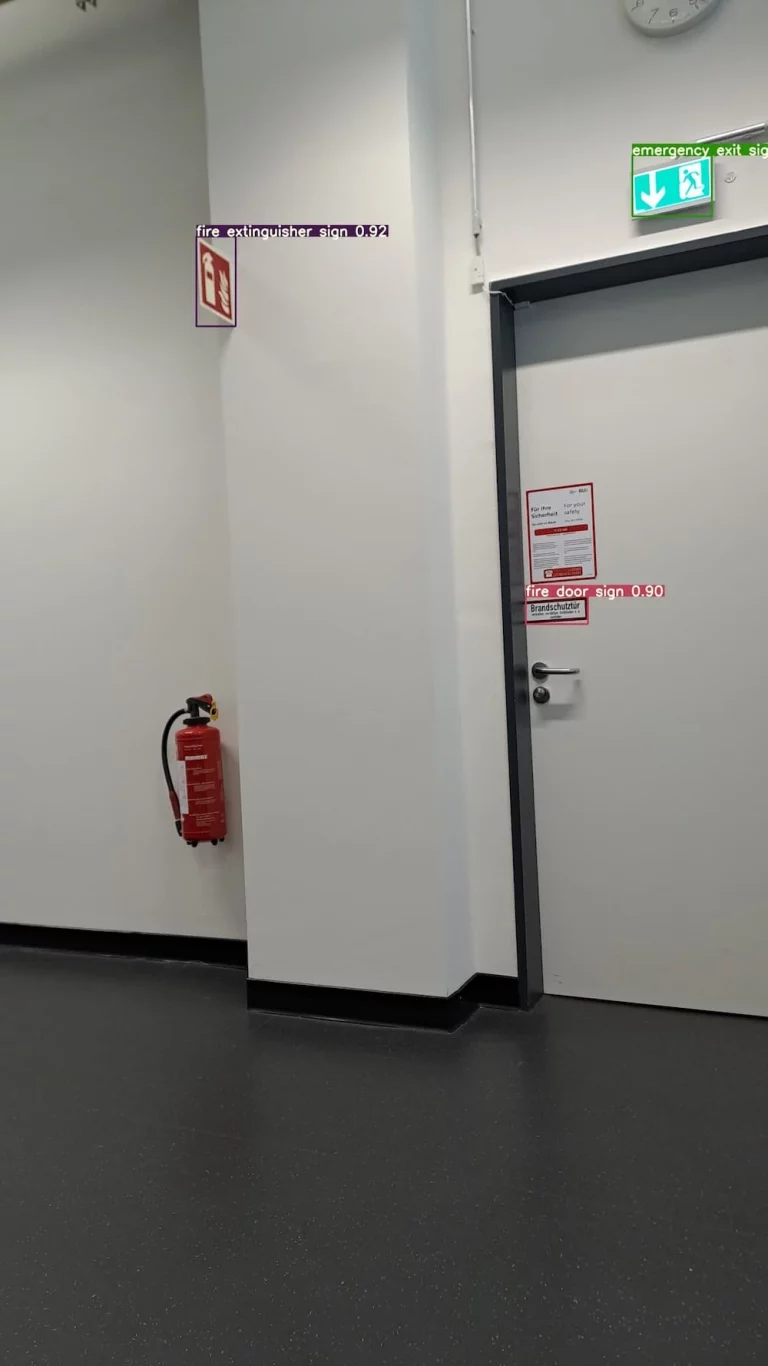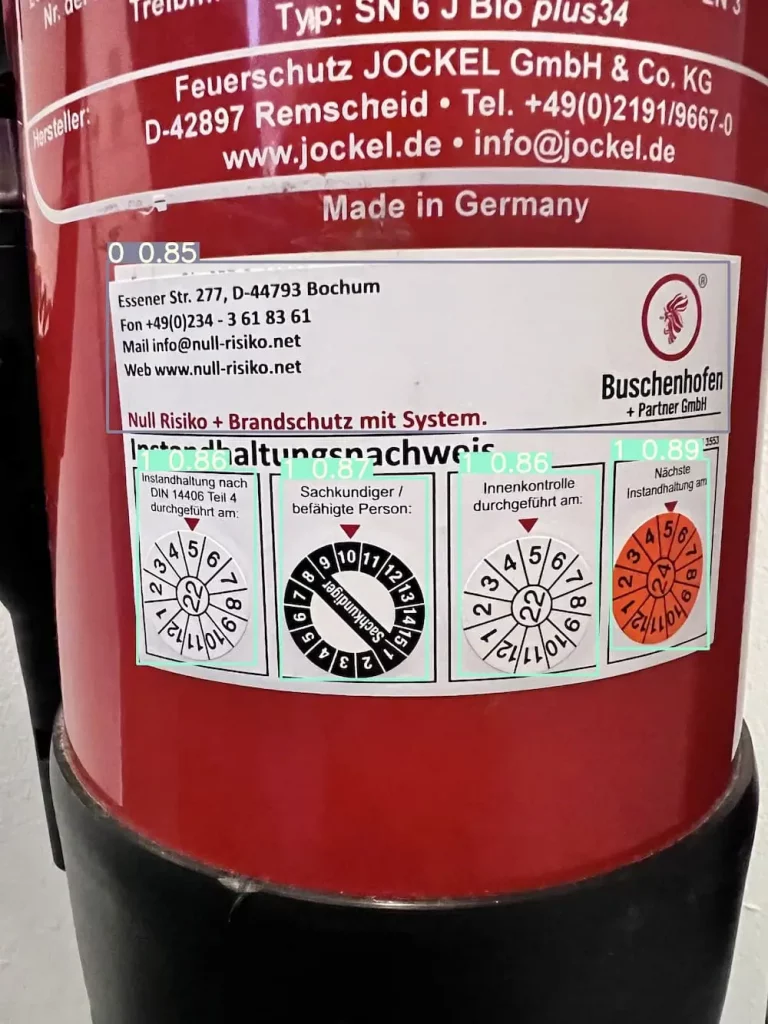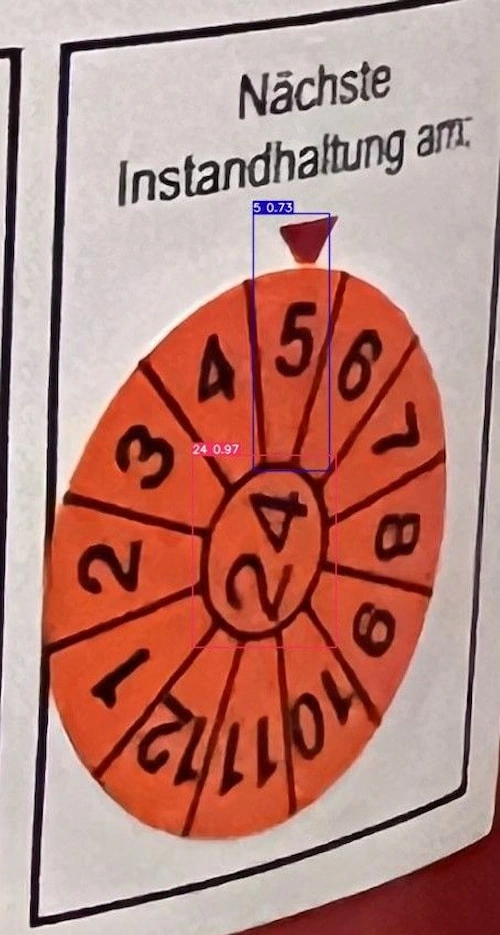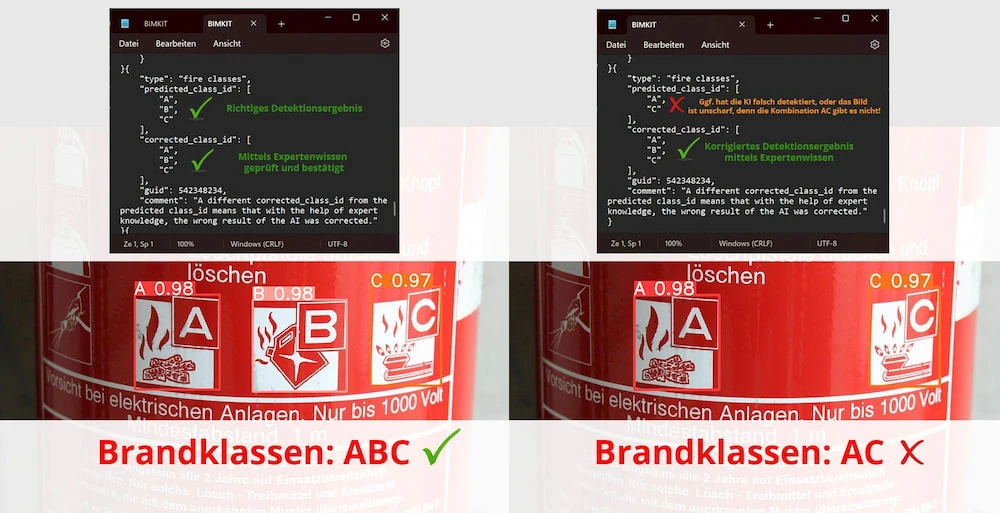1. Detection of safety label
The goal of this service is to create a synthetic dataset that can be used in conjunction with a small amount of real-world data to train a neural network capable of recognizing health and safety labels in real-world situations. This will involve localizing the safety labels in the image using a bounding box.

2. Detection of inspection tags
The aim of this service is the automated recognition of inspection tags attached to a fire extinguisher using a bounding box.

3. Recognition of inspection tag information
With the help of this service, the month and year information on the individual inspection tags of a fire extinguisher is automatically recognized based on bounding boxes.

4. Detection of extinguishing agent type with expert knowledge
This service recognizes the depicted fire class symbols on a fire extinguisher with the help of expert knowledge and bounding boxes.
When extinguishing a fire, the burning substance plays a decisive role, because burning paper poses different dangers than a burning stove. Different fires therefore require different extinguishing agents. Each fire can be assigned to a specific fire class, from A to F – with class E excluded. In total, then, there are five such fire classes. Some extinguishing agents are capable of covering several fire classes at the same time, while others have been developed specifically for a particular class.


Data for all the above AI services:
- Quality: documentation images should be of good quality and preferably without blur. The image can be in horizontal or vertical format. Processing poor quality images is also possible but tends to produce poorer results.
- Input data format:
- JPG
- Training data available:
- Self-made data set
- External data set: https://www.firenet.xyz/
- Output data format:
- ZIP file:
- JSON file
- List of all detected bounding boxes (per bounding box: coordinates for 2 points in 2D)
- JPG file
- Original file for further processing
- Visualization of the deketion on the original file
- JSON file
- ZIP file:
Contact Person:
Angelina Aziz, M. Sc., Lehrstuhl für Informatik im Bauwesen, Ruhr-Universität Bochum
